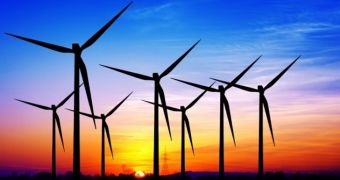This May 29, the Department for Energy and Climate Change in the United Kingdom announced that the country's wind and hydropower output upped by as much as 55% during this year's first three months when compared to last year.
In a press release on the matter at hand, specialists with the Department detail that an increase in power production was documented in the case of both onshore and offshore installations intended to harvest wind energy.
Specifically, onshore wind generation is said to have been about 58% higher during the first three months of 2014 than it was during the same period in 2013, Business Green tells us.
By comparison, the United Kingdom's offshore wind generation industry reported an increase in power production of just 30%, the same source goes on to add.
“It's particularly interesting to see that in the first three months of this year, onshore wind generation was up 58 per cent compared to the same period last year,” a spokesperson for RenewableUK comments on these figures.
Furthermore, “It clearly demonstrates that, when the Conservatives say they intend to end support for new onshore wind projects, they're failing to take into account the central role that this technology is playing.”
“If the UK is serious about cleaning up the way we generate electricity, as well as keeping consumer bills down as onshore wind is our most cost-effective form of renewable energy, we need to develop it further rather than stifling it.”
The Department for Energy and Climate Change goes on to explain that, courtesy of heavy rainfalls, hydropower stations operating across the country's territory experienced an increase of about 100% in terms of power production.
Simply put, these stations flexed their installations and turbines and eventually coughed out about twice as much clean energy as they did during the first three months of 2013.
Not at all surprisingly, this increase in clean power generation went hand in hand with a drop in the use of more conventional energy sources. Thus, the amount of power provided by coal-fired power stations, natural gas, and nuclear facilities fell by 16.8%, 21%, and 9.7%, respectively.
What's interesting is that, in a separate report, the Department for Energy and Climate Change shows that the United Kingdom is not interested in wind and hydropower alone. Thus, the country has taken quite a liking to solar, meaning that it added a capacity of 427MW during this year's first four months.

 14 DAY TRIAL //
14 DAY TRIAL //